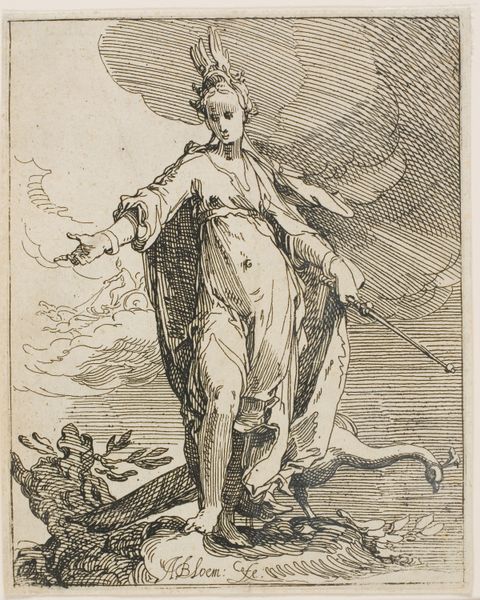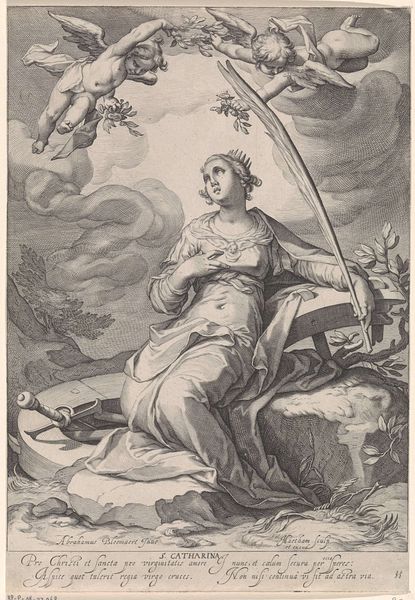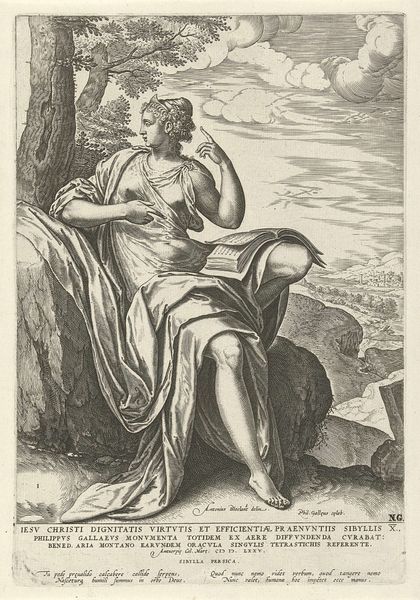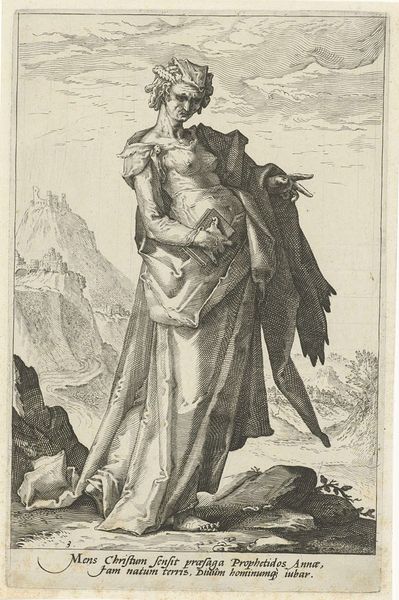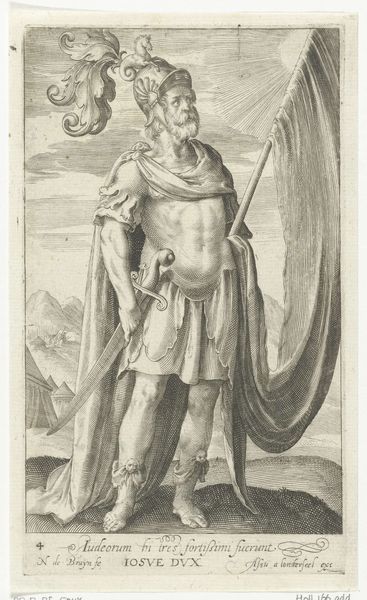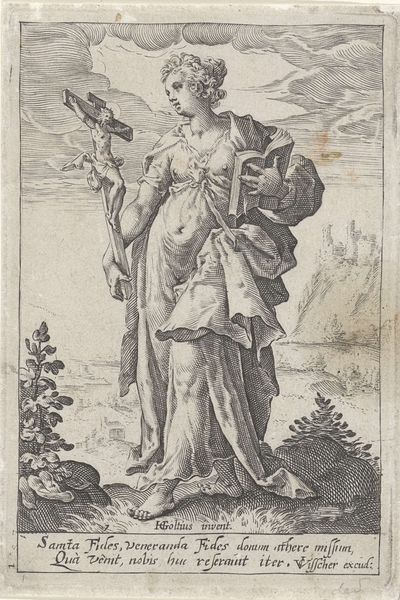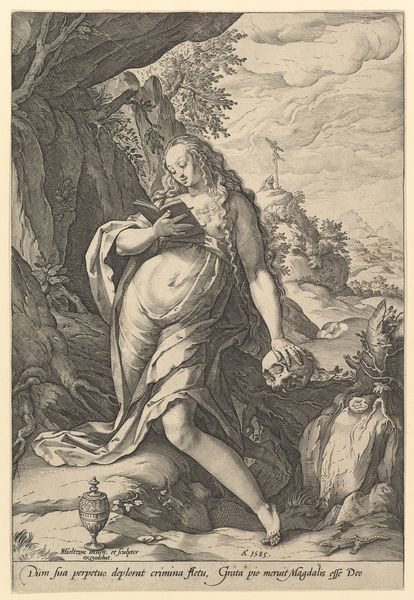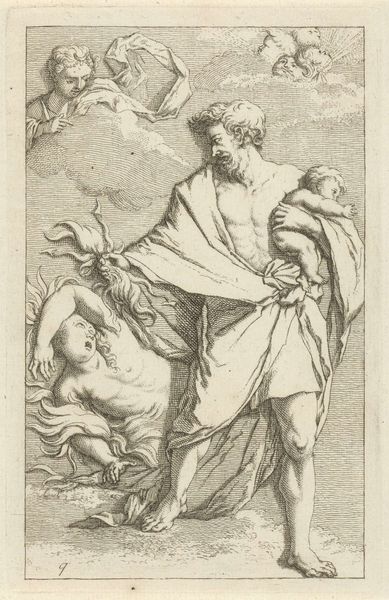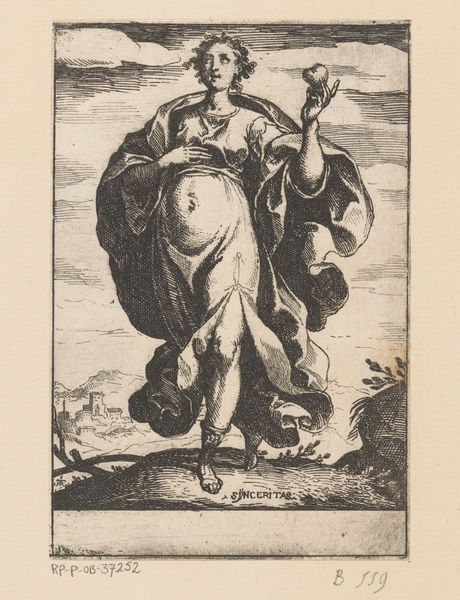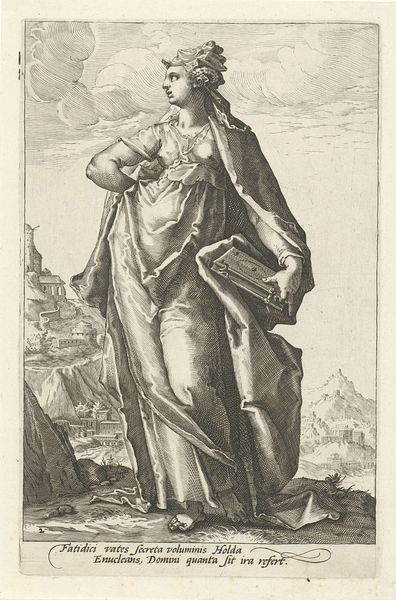
print, engraving
#
allegory
#
baroque
# print
#
figuration
#
history-painting
#
engraving
Dimensions: 260 mm (height) x 177 mm (width) (plademaal)
Editor: This is "Synet", an engraving by Nicolaes Jansz. Clock from 1596. It depicts a figure holding what looks like a… bird? Maybe it's a mirror. She is posed with a large eagle. What historical context can you provide? Curator: Well, looking at this through a historical lens, it speaks volumes about the public role of art in the late 16th century. Consider the print medium itself – engravings like this facilitated the broad dissemination of ideas. This print clearly forms part of a larger symbolic and allegorical system. Note the title "VISUS" in Latin, which directs us to a symbolic order. Can you make out what it means, what it points to? Editor: It must be related to sight, or vision. So she may be representing a sensory ability. Curator: Exactly. And what do you make of the partially nude figure and the eagle? Editor: They feel quite staged. Perhaps it represents a classical allegory, then, and comments on vision, social structures, and power at the time? The text underneath it is an important clue. The socio-political forces are probably shaping our understanding, and are an intrinsic aspect of its construction. Curator: Precisely! The choice to depict "sight" in this way connects to humanist ideals and the era's fascination with classical antiquity. It highlights the period’s socio-political ideas on female power and their link with visual perception. This piece encourages reflection, even critique. A powerful tool for public discourse. Editor: This piece gives food for thought, particularly the subtle details and how those enhance its allegorical status and our ability to appreciate the societal commentary it offers! Thank you. Curator: Absolutely. And remember, analyzing art is always about interrogating its role in shaping and reflecting public perception.
Comments
No comments
Be the first to comment and join the conversation on the ultimate creative platform.

